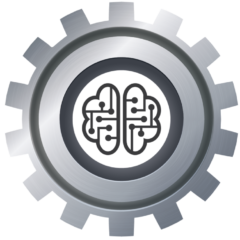Our thoughts shape our reality. The way we perceive the world and ourselves is heavily influenced by the language we use internally and externally. Neuro-Linguistic Programming (NLP) is a powerful psychological approach that delves into the connection between language, thought patterns, and behavior. This transformative discipline offers practical tools to identify and modify unhelpful thought patterns, allowing individuals to achieve personal growth and success. In recent years, researchers and practitioners have begun exploring the intriguing relationship between NLP and Neuroplasticity, the brain’s ability to reorganize and form new neural connections. This article seeks to illuminate the fascinating ways in which NLP can harness the power of neuroplasticity, leading to profound personal transformation.
- Understanding the Intersection: NLP and Neuroplasticity:
Neuroplasticity, once thought to be limited to childhood development, has been found to be a lifelong phenomenon. The brain continuously adapts and rewires itself in response to experiences, learning, and thoughts. NLP capitalizes on this neurological plasticity by providing tools to analyze and reframe thought patterns that might be limiting or negative. One of the fundamental principles of NLP is the idea that changing the language we use to describe our experiences can lead to profound changes in our emotional state and behavior. By employing techniques such as rephrasing negative self-talk, visualizations, and anchoring positive emotions, individuals can initiate synaptic changes in their brains that support healthier thought patterns and actions.
- Breaking Free from Limiting Beliefs:
Limiting beliefs can hinder personal growth and success. These self-imposed restrictions can stem from past experiences, childhood conditioning, or societal influences. Through NLP, individuals can explore the root causes of these limiting beliefs and challenge their validity. By consciously altering the language used to describe these beliefs, one can initiate a cognitive shift that undermines their power. Neuroplasticity research suggests that repeated exposure to new ways of thinking can lead to the formation of new neural pathways, weakening the influence of old, limiting thought patterns. As individuals persistently reinforce empowering language and positive affirmations, they begin to adopt new beliefs that align with their aspirations and potential.
- NLP Techniques for Neuroplastic Transformation:
NLP offers a diverse array of techniques to catalyze neuroplastic changes and foster personal transformation. Anchoring, a widely used technique in NLP, involves associating a specific emotional state with a physical gesture or trigger. By consistently pairing this trigger with the desired emotional state, individuals can access that emotion whenever needed. Neuroplasticity research indicates that such repeated associations can strengthen neural connections related to the desired emotional state, leading to greater emotional regulation and resilience.
Additionally, visualization, another key NLP technique, capitalizes on the brain’s ability to simulate experiences. When individuals vividly imagine their desired outcomes and successes, they activate the same neural networks that would be engaged during real-life experiences. This practice reinforces positive thought patterns and fosters a sense of self-efficacy, prompting the brain to adapt and support the envisioned changes.
In Summary
The integration of Neuro-Linguistic Programming and Neuroplasticity represents a powerful synergy in the realm of personal transformation. By understanding and leveraging the brain’s inherent plasticity, NLP empowers individuals to rewire thought patterns, dissolve limiting beliefs, and embark on a journey of self-discovery and growth. Through consistent practice and dedication, the transformational potential of NLP extends beyond the realm of theory and finds its roots in the tangible changes within the brain’s neural connections. Embracing this intersection between NLP and Neuroplasticity opens up a world of opportunities for individuals seeking to create positive, lasting change in their lives, paving the way for personal fulfillment and empowerment.
 You can check out Matt’s LinkedIn account, Youtube Channel, or Podcast.
You can check out Matt’s LinkedIn account, Youtube Channel, or Podcast.Introducing my new books, ‘The Art of Critical Thinking’ and ‘The Critical Thinking Model’. Both can be read for free with Kindle Unlimited or $2.99 each via Kindle.